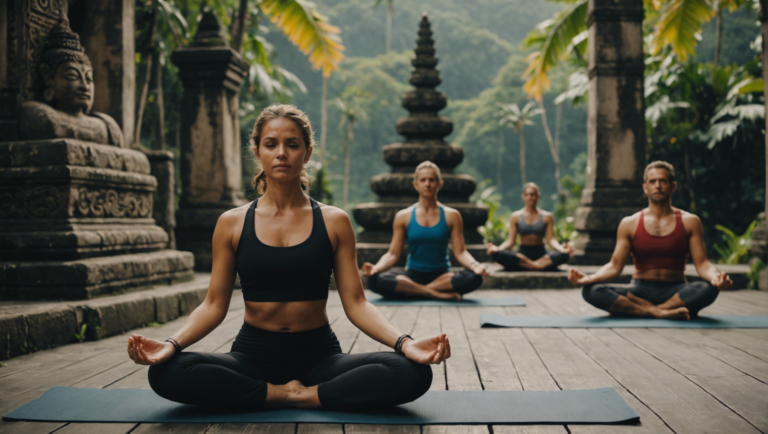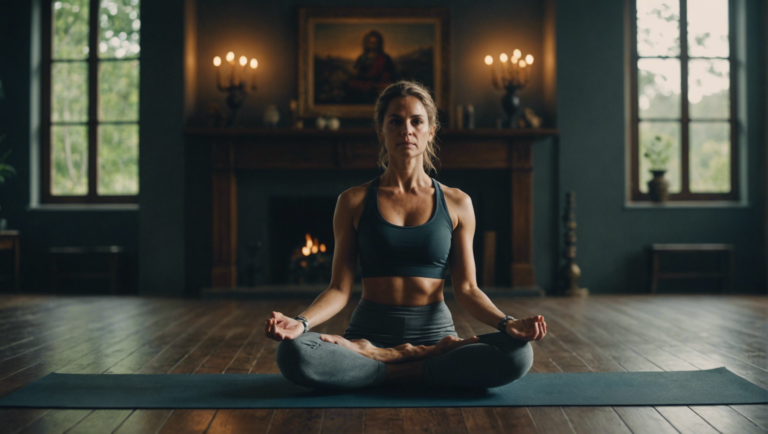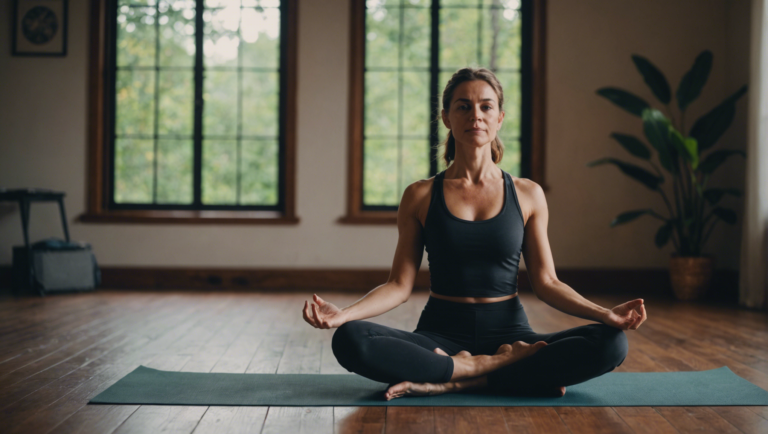Guidelines For Practicing Healing Yoga: Understanding Its Benefits And Techniques
Guidelines for Practicing Healing Yoga: Understanding its Benefits and Techniques
Yoga is a transformative practice that encompasses physical postures, breathing techniques, and meditation. Healing Yoga, in particular, focuses on using these elements to promote overall well-being and address specific health concerns. By understanding the benefits and techniques of Healing Yoga, individuals can harness its power to enhance their physical, mental, and emotional health.
Benefits of Healing Yoga
Healing Yoga offers a wide range of benefits that contribute to overall wellness. One of the primary advantages is stress reduction. Through mindful movement and focused breathing, Healing Yoga helps calm the mind and relax the body, reducing stress levels and promoting a sense of peace and tranquility.
Furthermore, Healing Yoga can improve flexibility, strength, and balance. The various poses and sequences practiced in Healing Yoga help increase flexibility in the muscles and joints, strengthen the body, and improve overall balance and coordination.
Healing Yoga also supports mental health by promoting mindfulness and awareness. The practice encourages individuals to be present in the moment, cultivating a sense of clarity and inner peace. This mindfulness can help reduce anxiety, depression, and other mental health issues.
Techniques of Healing Yoga
To practice Healing Yoga effectively, it is essential to understand and implement specific techniques. One of the key elements of Healing Yoga is conscious breathing. Breath awareness is integral to the practice, as it helps individuals stay focused, calm the mind, and connect with their body on a deeper level.
Another important technique in Healing Yoga is proper alignment. Ensuring that the body is aligned correctly in each posture helps prevent injuries, maximizes the benefits of the pose, and promotes overall body awareness and mindfulness.
Additionally, incorporating meditation and relaxation techniques into your Healing Yoga practice can enhance its healing effects. Taking time to quiet the mind, relax the body, and cultivate a sense of inner peace can help individuals tap into their body’s natural healing abilities.
Practicing Healing Yoga Safely
When engaging in Healing Yoga, it is crucial to prioritize safety and listen to your body. It is essential to start slowly, especially if you are new to yoga, and gradually increase the intensity and duration of your practice.
Consulting with a qualified yoga instructor or healthcare provider is advisable, especially if you have any health concerns or pre-existing medical conditions. They can provide guidance on modifications, adjustments, and poses that are safe and beneficial for your specific needs.
Incorporating Healing Yoga into your wellness routine can have profound effects on your overall health and well-being. By understanding the benefits, techniques, and safety guidelines of Healing Yoga, you can embark on a journey of self-discovery, healing, and transformation. Embrace the practice with an open heart and mind, and allow its therapeutic powers to guide you on a path to greater harmony and vitality.
The Importance of Mind-Body Connection in Yoga Practice
The mind-body connection plays a pivotal role in the practice of yoga, facilitating a harmonious synergy between mental and physical well-being. By delving into the depths of this connection, individuals can achieve profound benefits that extend beyond the realms of physical exercise. Understanding the essence of this interconnectedness unveils a transformative journey towards holistic health and wellness.
Establishing Inner Harmony through Yoga Practice
Yoga serves as a transformative tool that fosters a deep connection between the mind and body. Through various postures, breathing techniques, and meditation practices, individuals can cultivate mindfulness and self-awareness. This heightened awareness enables practitioners to tap into their inner selves, leading to a sense of balance and tranquility. By aligning movement with breath and intention, yoga paves the way for inner harmony and emotional equilibrium.
Enhancing Mindfulness and Concentration
The practice of yoga encourages individuals to be present in the moment, fostering mindfulness and concentration. By turning inward and focusing on the breath, practitioners learn to quiet the fluctuations of the mind. This enhanced focus not only deepens the yoga practice but also carries over into daily life, improving concentration, decision-making, and overall cognitive function. The meditative aspects of yoga promote mental clarity and emotional stability, allowing individuals to navigate life’s challenges with a sense of equanimity.
Cultivating Emotional Well-being and Stress Relief
Yoga serves as a powerful tool for managing stress and cultivating emotional well-being. As individuals engage in physical postures and rhythmic breathing, the body releases tension and stress, promoting relaxation and inner peace. The mind-body connection established through yoga allows practitioners to observe and regulate their emotional responses, leading to greater emotional intelligence and resilience. By engaging in regular yoga practice, individuals can reduce anxiety, alleviate depression, and enhance overall emotional well-being.
Harnessing the Healing Power of Yoga
The healing benefits of yoga extend beyond the physical body, encompassing mental, emotional, and spiritual aspects of well-being. Through the practice of yoga, individuals can release emotional blockages, heal past traumas, and cultivate a sense of inner peace. The mind-body connection facilitated by yoga enables individuals to tap into their body’s innate healing potential, promoting overall vitality and wellness. By embracing yoga as a holistic healing practice, individuals can embark on a transformative journey towards self-discovery and personal growth.
Embracing the Journey of Self-discovery
In essence, the importance of the mind-body connection in yoga practice lies in its ability to facilitate self-discovery and inner transformation. By nurturing this connection through dedicated practice, individuals can unravel the layers of their being, fostering a deep sense of self-awareness and authenticity. The integration of mind, body, and spirit in yoga practice empowers individuals to embark on a journey of self-realization, leading to profound personal growth and holistic well-being.
Through the cultivation of the mind-body connection in yoga practice, individuals can embark on a transformative journey towards holistic health and well-being. By nurturing this connection, practitioners can enhance mindfulness, concentration, emotional well-being, and harness the healing power of yoga. Embracing the interconnectedness of mind and body in yoga practice allows individuals to explore the depths of their being, fostering self-discovery, personal growth, and inner transformation.
Exploring Different Styles of Healing Yoga for Various Health Needs
Incorporating Meditation and Breathing Techniques in Healing Yoga Sessions
Meditation and Breathing Techniques in Healing Yoga Sessions
Healing yoga is a powerful practice that combines the physical postures of yoga with meditation and breathing techniques to promote overall well-being. meditation and specific breathing techniques into your healing yoga sessions can enhance the benefits you receive from your practice. Let’s delve into how these elements can amplify the healing effects of your yoga sessions.
The Power of Meditation in Healing Yoga
Meditation is a fundamental aspect of healing yoga that allows practitioners to cultivate mindfulness and focus. By incorporating meditation into your yoga practice, you can deepen your mind-body connection and promote a sense of inner peace and tranquility. During meditation, you can observe your thoughts and emotions without judgment, fostering self-awareness and emotional regulation.
In healing yoga sessions, incorporating meditation can help reduce stress, anxiety, and depression. By practicing mindfulness meditation, you can learn to stay present in the moment and cultivate a sense of calmness and relaxation. This can be particularly beneficial for individuals dealing with chronic pain, insomnia, or other physical and mental health challenges.
Harnessing the Power of Breathwork
Breathwork, or specific breathing techniques, plays a crucial role in healing yoga sessions. By focusing on your breath during yoga practice, you can enhance the mind-body connection, increase oxygen flow to your muscles, and promote relaxation. Deep breathing techniques, such as diaphragmatic breathing or alternate nostril breathing, can help calm the nervous system and reduce stress levels.
Breathwork into your healing yoga practice can also help improve lung function, increase energy levels, and enhance mental clarity. By paying attention to your breath patterns, you can release tension, improve circulation, and detoxify your body. Moreover, specific breathing techniques can help alleviate symptoms of respiratory conditions like asthma or COPD.
Creating a Holistic Healing Experience
When you combine meditation and breathing techniques in your healing yoga sessions, you create a holistic experience that nurtures your body, mind, and spirit. The synergy between mindful movement, meditation, and conscious breathing amplifies the therapeutic effects of your practice. By incorporating these elements consistently, you can cultivate a profound sense of well-being and vitality.
Meditation and breathwork into your healing yoga sessions can lead to a deeper sense of self-awareness, emotional balance, and physical vitality. Whether you are a beginner or an experienced yogi, integrating these practices into your routine can enhance the healing benefits of yoga. Explore different meditation techniques and breathing exercises to discover what resonates best with you and create a personalized healing yoga practice that nurtures your overall well-being.
Tips for Creating a Safe and Nurturing Environment for Healing Yoga Practice
Healing yoga is a powerful practice that combines the benefits of yoga with healing techniques to promote overall well-being. Creating a safe and nurturing environment for practicing healing yoga is essential to optimize its benefits. By following specific guidelines, individuals can enhance their healing journey through yoga while ensuring safety and comfort.
Understanding the Importance of a Safe Environment
A safe environment is crucial for practicing healing yoga as it allows individuals to let go of stress, tension, and any emotional baggage they may be carrying. When the mind and body feel safe, it becomes easier to focus on the practice and reap the full benefits of healing yoga. Creating a safe space involves both physical and emotional aspects to support a holistic healing experience.
Setting the Mood with Lighting and Aromatherapy
Lighting plays a significant role in creating a calming atmosphere for healing yoga practice. Soft, warm lighting or natural sunlight can help set the mood for relaxation and introspection. Additionally, incorporating aromatherapy through essential oils such as lavender, chamomile, or eucalyptus can further enhance the healing environment by promoting a sense of peace and tranquility.
Choosing the Right Music and Soundscape
The use of music and soundscape can greatly influence the energy of the space during healing yoga practice. Soft instrumental music, nature sounds, or chanting can create a soothing ambiance that supports deep relaxation and mindfulness. It is important to select music that resonates with the individual’s preferences and helps facilitate a sense of inner calm and focus.
Clearing the Space of Clutter and Distractions
A clutter-free environment is essential for promoting clarity of mind during healing yoga practice. Remove any unnecessary items from the practice area to create a sense of space and tranquility. Minimizing distractions such as electronic devices, loud noises, or visual clutter can help individuals focus inward and deepen their connection to the healing process.
Practicing Mindfulness and Intention Setting
Before beginning a healing yoga practice, take the time to set intentions for the session and cultivate a sense of mindfulness. By directing attention to specific goals or desired outcomes, individuals can enhance the healing benefits of yoga practice. Practicing mindfulness throughout the session helps maintain focus and awareness, ultimately deepening the mind-body connection.
Breathwork and Meditation Techniques
Breathwork and meditation are integral components of healing yoga that promote relaxation, stress relief, and emotional healing. Encourage deep, conscious breathing throughout the practice to calm the nervous system and center the mind. meditation techniques such as visualization or body scanning can further enhance the healing experience and promote inner peace.
Creating a safe and nurturing environment for healing yoga practice is essential for maximizing its benefits and promoting holistic well-being. By paying attention to the physical space, emotional atmosphere, and mindfulness practices, individuals can cultivate a supportive environment that fosters healing on all levels. Incorporate these guidelines into your healing yoga practice to create a sacred space where healing and transformation can truly thrive.
Conclusion
Meditation and breathing techniques in healing yoga sessions can significantly enhance the overall experience and benefits. Meditation helps in calming the mind, reducing stress, and promoting mental clarity. By incorporating mindfulness practices into healing yoga sessions, individuals can deepen their connection to the present moment and enhance the mind-body-spirit connection.
Breathing techniques, such as pranayama, are an integral part of healing yoga practice. Conscious breathing not only oxygenates the body but also helps in releasing tension, promoting relaxation, and improving overall well-being. By focusing on breath awareness during yoga sessions, individuals can cultivate a sense of inner peace and harmony.
Creating a safe and nurturing environment for healing yoga practice is crucial to ensure a positive and transformative experience. Practitioners should pay attention to setting up a welcoming space that is free from distractions and conducive to relaxation. Using props such as yoga mats, bolsters, and blankets can help individuals feel comfortable and supported during their practice.
Practicing healing yoga offers a holistic approach to health and wellness by integrating physical postures, breathing techniques, meditation, and mindfulness practices. By following the guidelines for practicing healing yoga and understanding its benefits and techniques, individuals can harness the power of yoga to heal the body, calm the mind, and uplift the spirit. The importance of the mind-body connection in yoga practice cannot be overstated, as it forms the foundation of healing and transformation.
Exploring different styles of healing yoga can cater to various health needs and preferences, allowing individuals to find a practice that resonates with them. Whether it’s gentle restorative yoga for stress relief, invigorating vinyasa flow for energy and strength, or meditative yin yoga for deep relaxation, there is a style of healing yoga for everyone.
By embracing the mind-body connection, incorporating meditation and breathing techniques, exploring different styles of healing yoga, and creating a safe environment for practice, individuals can embark on a transformative journey towards healing and self-discovery. Healing yoga is more than just a physical practice; it is a way of life that promotes balance, harmony, and overall well-being.


